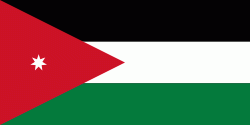Balqa Governorate (Muḩāfaz̧at al Balqā’)
Balqa' (البلقاء Al Balqā’) is one of the governorates of Jordan. It is located northwest of Amman, Jordan's capital.
The governorate has the fourth largest population of the 12 governorates of Jordan, and is ranked 10th by area. It has the third highest population density in the kingdom after Irbid Governorate and Jerash Governorate.
The "Balqa" historically referred to the entire area of the eastern plateau of the Jordan Valley as early as the 7th century when Heraclius' brother Theodore fought an early campaign against the Arabs on the approaches to southern Syria. During biblical times, the southern part of Balqa was known as the Plains of Moab.
During World War I, the British army led by General Edmund Allenby entered Salt on 24 March 1918, in the Battles for Amman campaign, marking the end of a 500-year Ottoman rule. On March 21, 1968, the town of Karameh near Shouna al-Janubiyya was the site of Battle of Karameh, between Israel on one side, and Jordan and Palestinian forces (Fatah, PLO) on the other side. It was one of the largest military confrontations of the War of Attrition, in the period between the Six-Day War of 1967 and the Yom Kippur War of 1973.
The governorate has the fourth largest population of the 12 governorates of Jordan, and is ranked 10th by area. It has the third highest population density in the kingdom after Irbid Governorate and Jerash Governorate.
The "Balqa" historically referred to the entire area of the eastern plateau of the Jordan Valley as early as the 7th century when Heraclius' brother Theodore fought an early campaign against the Arabs on the approaches to southern Syria. During biblical times, the southern part of Balqa was known as the Plains of Moab.
During World War I, the British army led by General Edmund Allenby entered Salt on 24 March 1918, in the Battles for Amman campaign, marking the end of a 500-year Ottoman rule. On March 21, 1968, the town of Karameh near Shouna al-Janubiyya was the site of Battle of Karameh, between Israel on one side, and Jordan and Palestinian forces (Fatah, PLO) on the other side. It was one of the largest military confrontations of the War of Attrition, in the period between the Six-Day War of 1967 and the Yom Kippur War of 1973.
Map - Balqa Governorate (Muḩāfaz̧at al Balqā’)
Map
Country - Jordan
 |
 |
| Flag of Jordan | |
Modern-day Jordan has been inhabited by humans since the Paleolithic period. Three stable kingdoms emerged there at the end of the Bronze Age: Ammon, Moab and Edom. In the third century BC, the Arab Nabataeans established their Kingdom with Petra as the capital. Later rulers of the Transjordan region include the Assyrian, Babylonian, Roman, Byzantine, Rashidun, Umayyad, Abbasid, and the Ottoman empires. After the Great Arab Revolt against the Ottomans in 1916 during World War I, the Greater Syria region was partitioned by Britain and France. The Emirate of Transjordan was established in 1921 by the Hashemite, then Emir, Abdullah I, and the emirate became a British protectorate. In 1946, Jordan gained independence and became officially known in Arabic as the Hashemite Kingdom of Jordan. The country captured the West Bank during the 1948 Arab–Israeli War and annexed it until it was lost to Israel in 1967. Jordan renounced its claim to the territory in 1988, and became the second Arab state to sign a peace treaty with Israel in 1994.
Currency / Language
| ISO | Currency | Symbol | Significant figures |
|---|---|---|---|
| JOD | Jordanian dinar | دا | 3 |
| ISO | Language |
|---|---|
| AR | Arabic language |
| EN | English language |


















